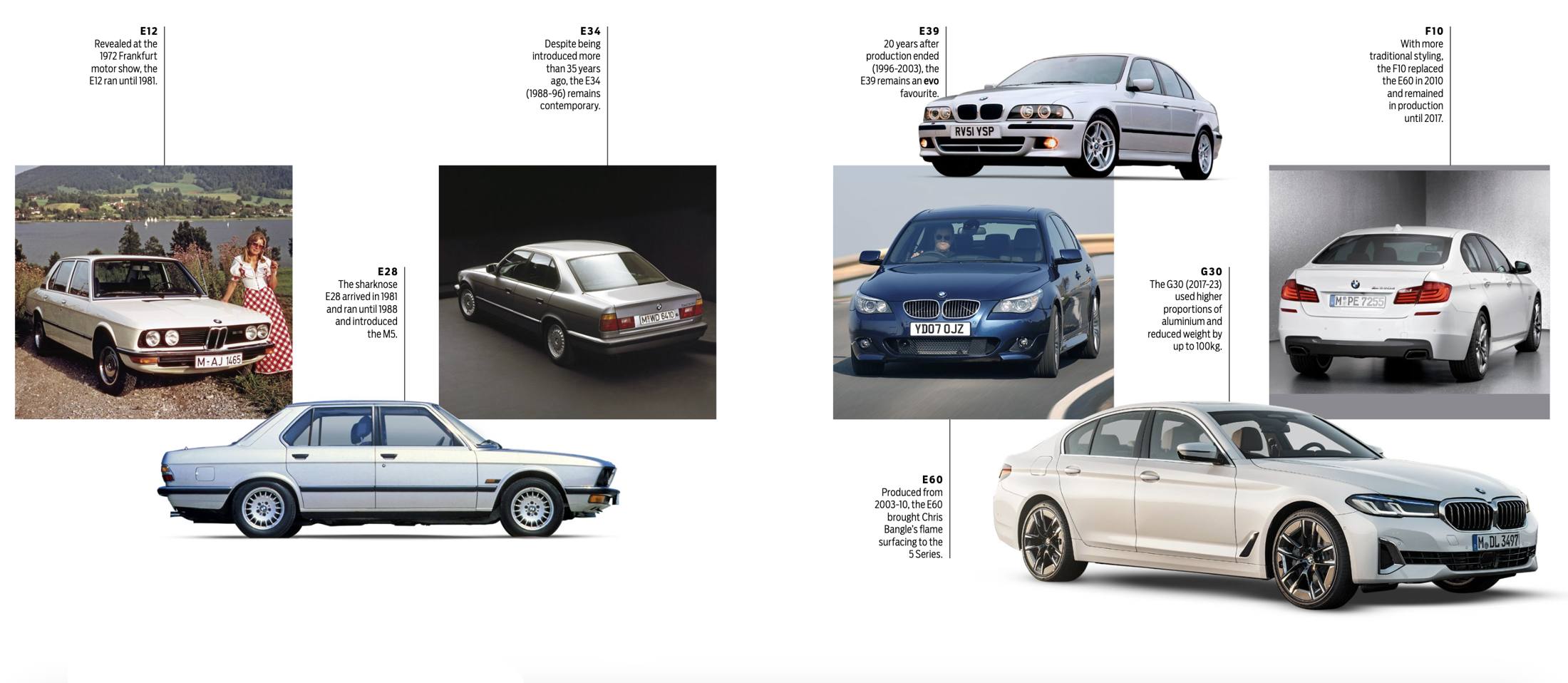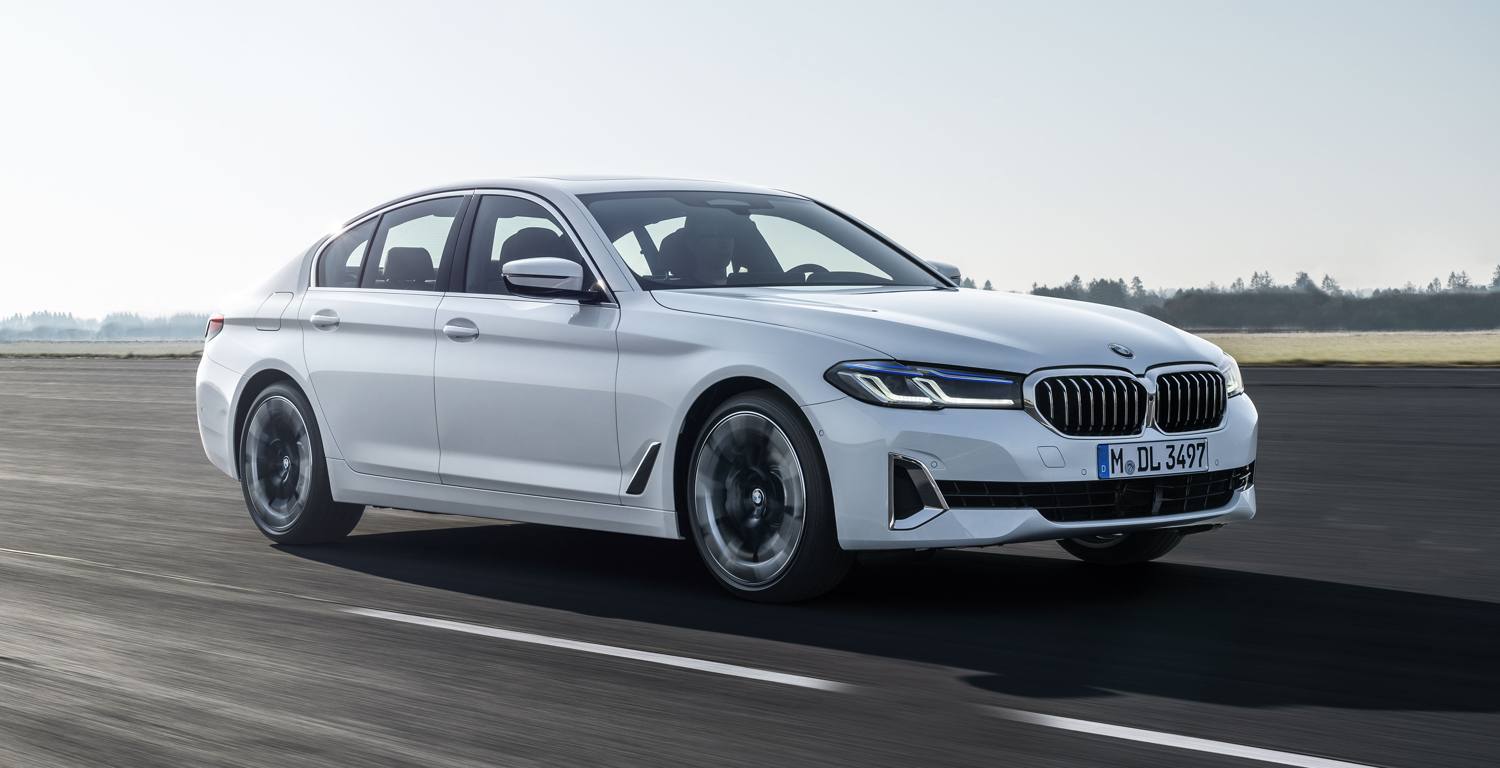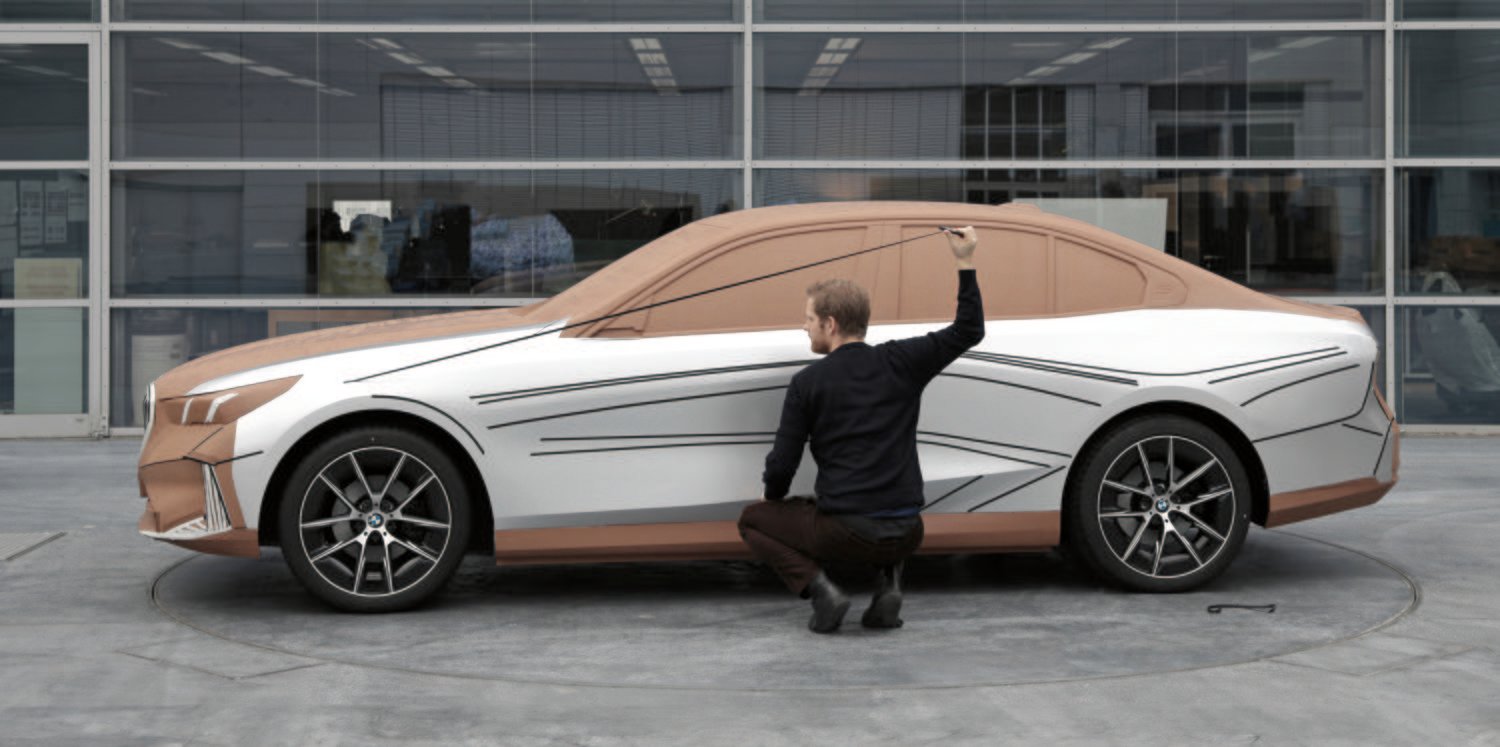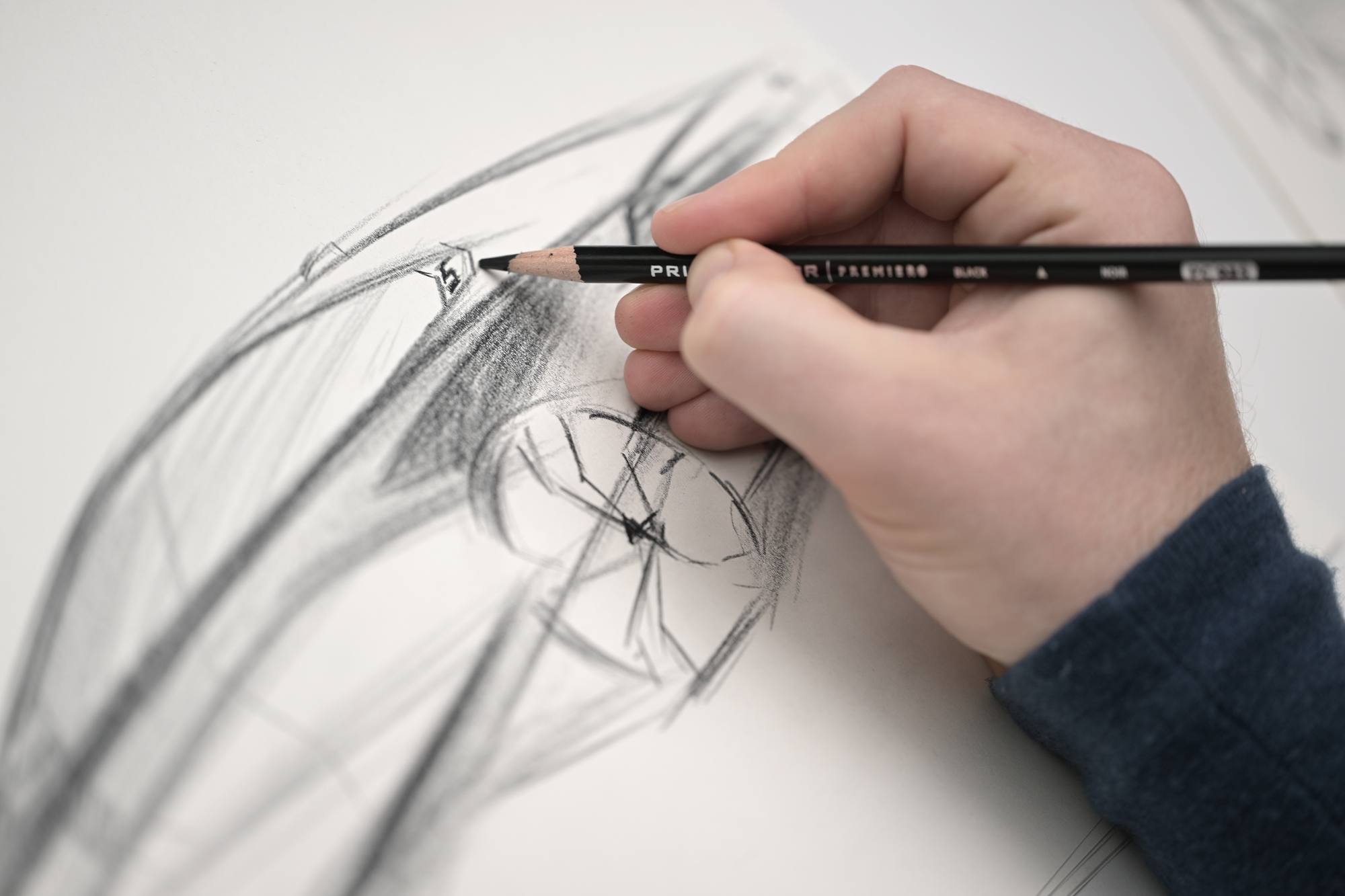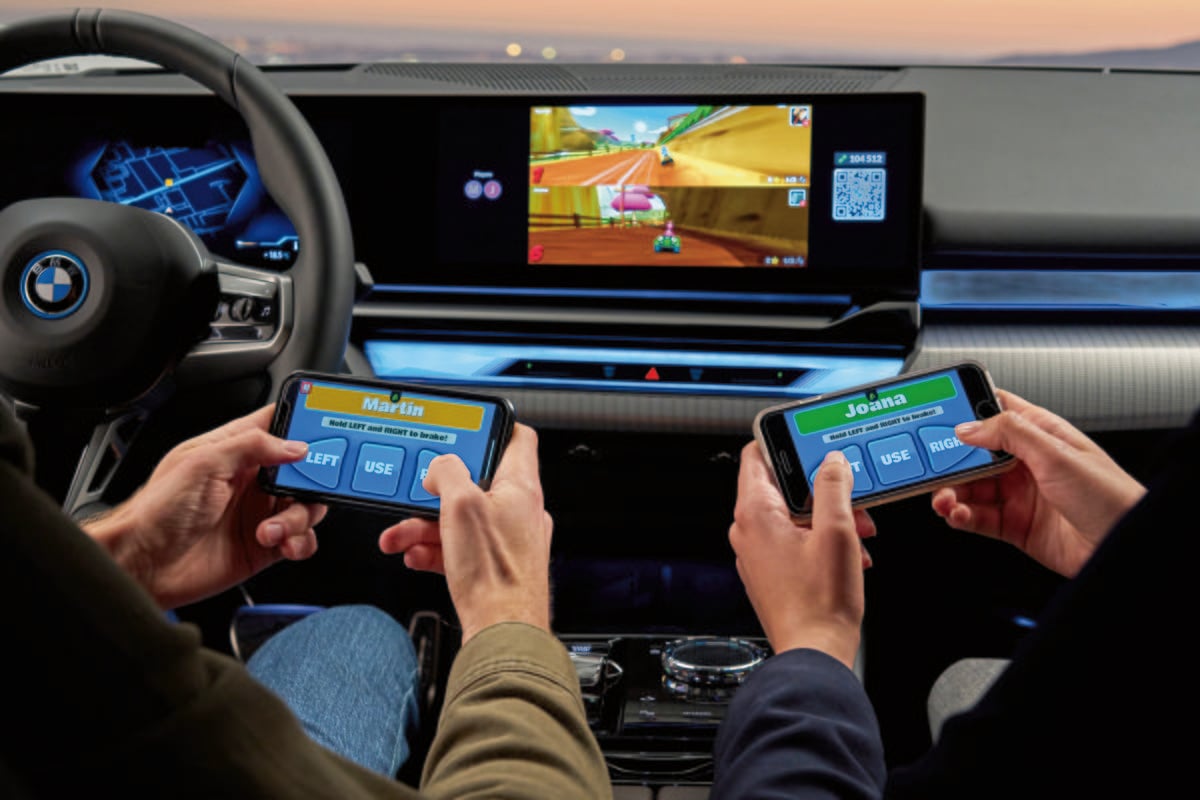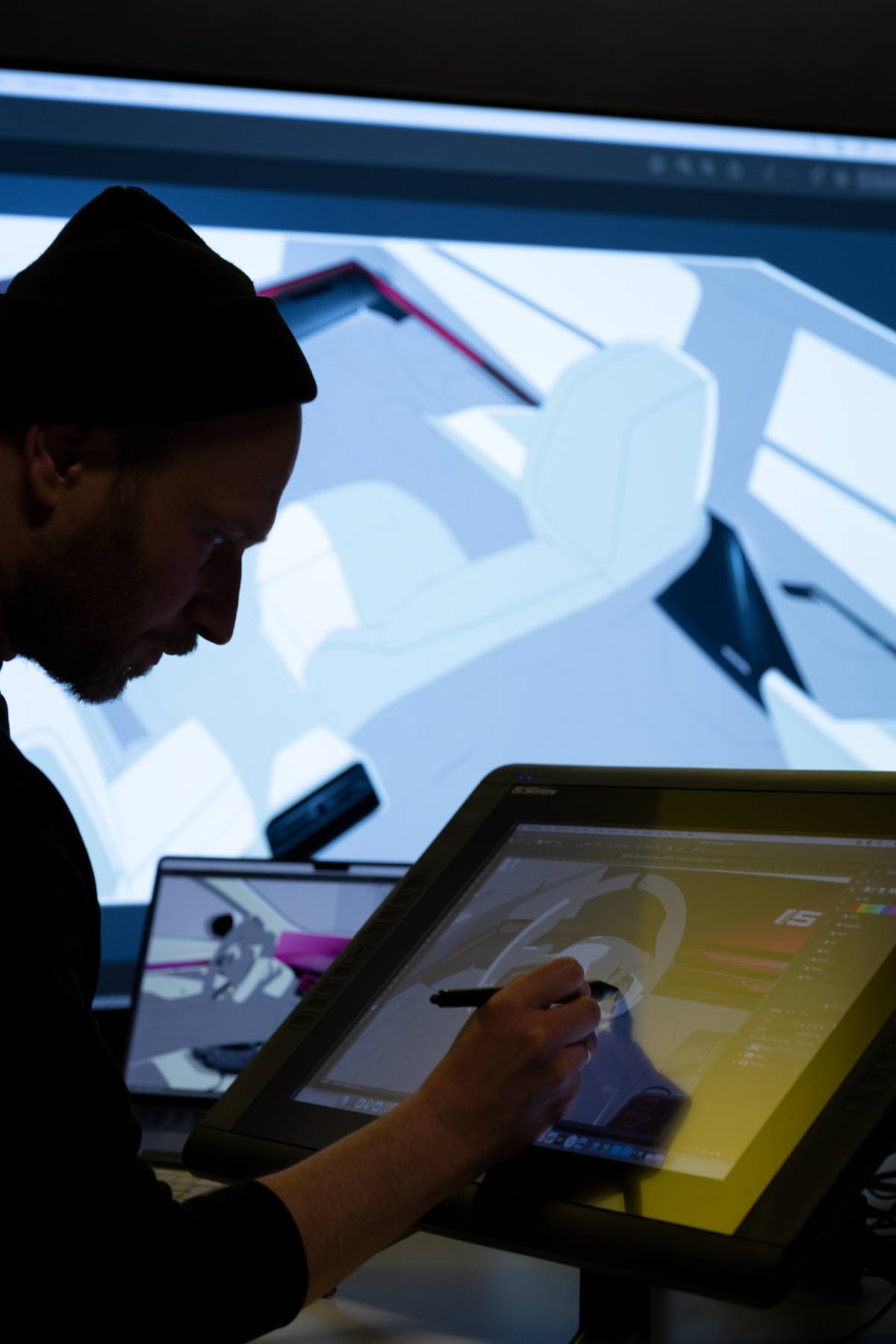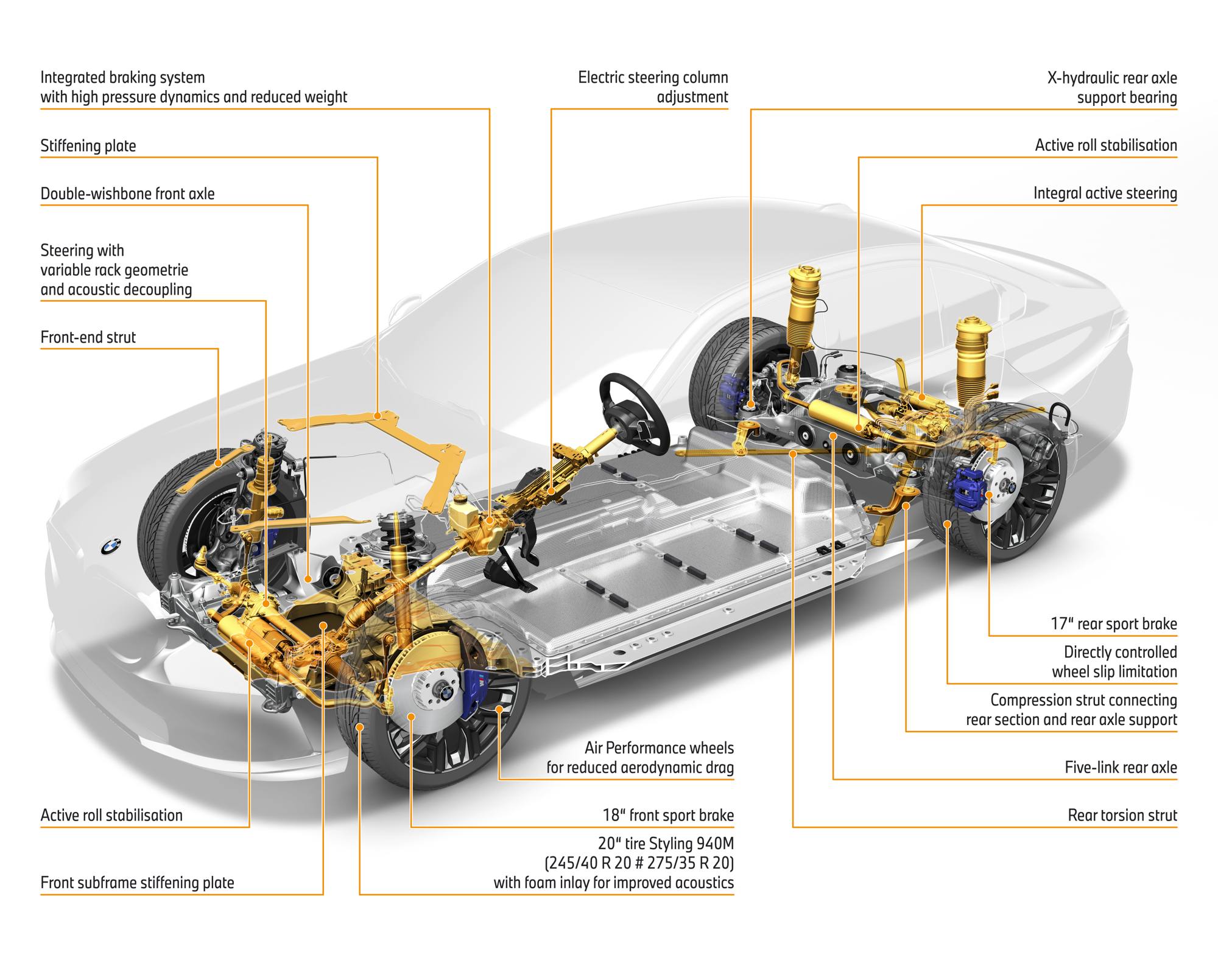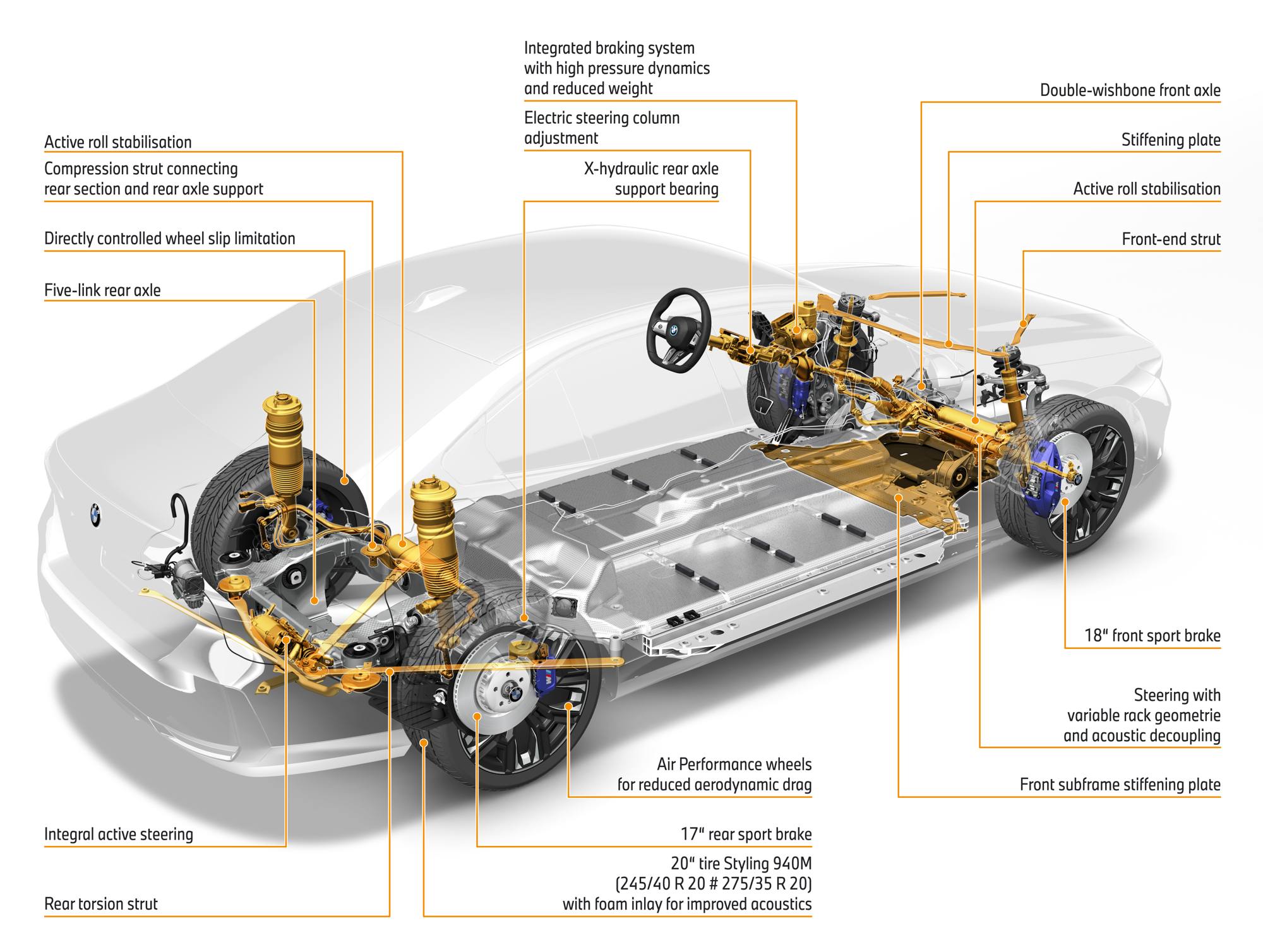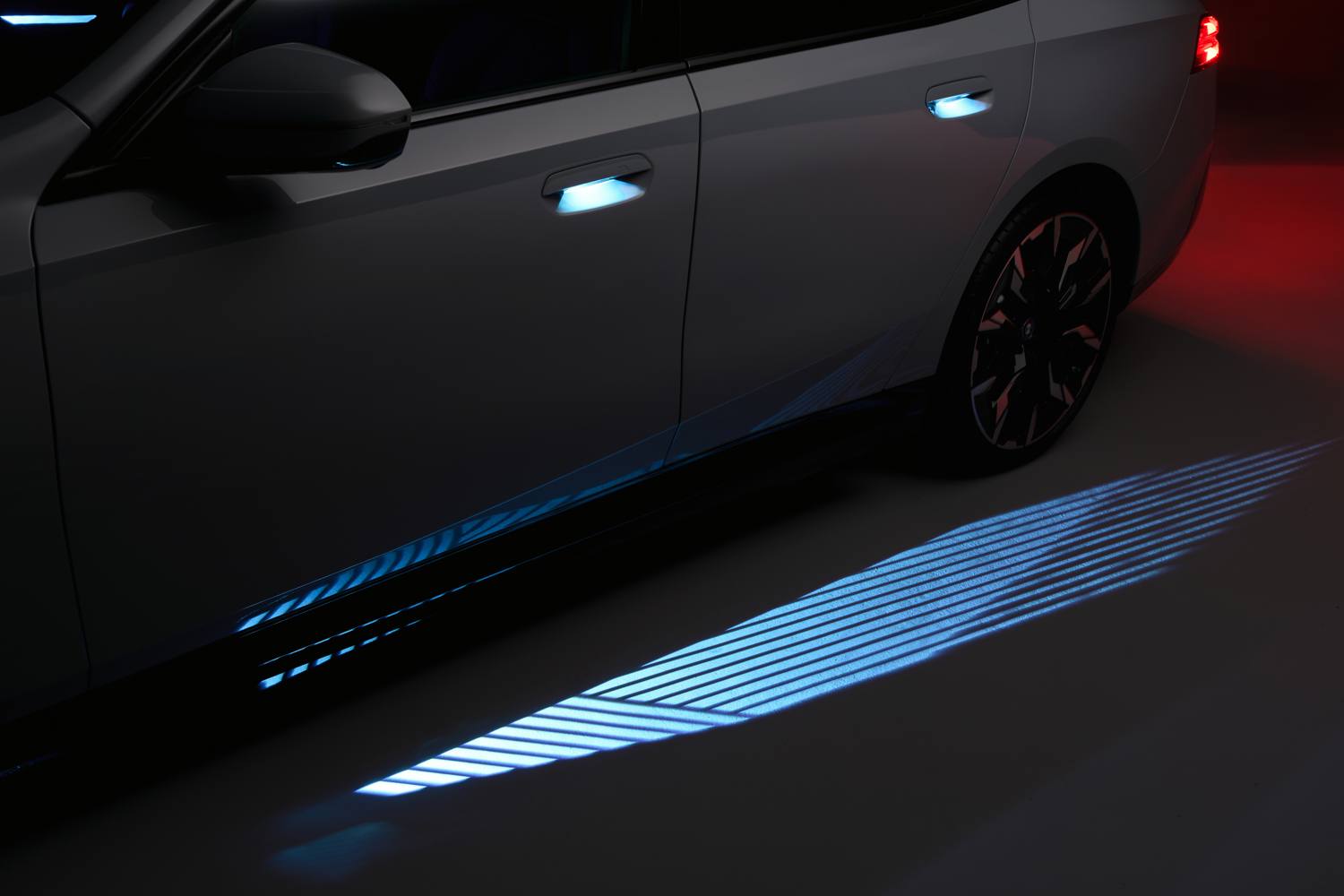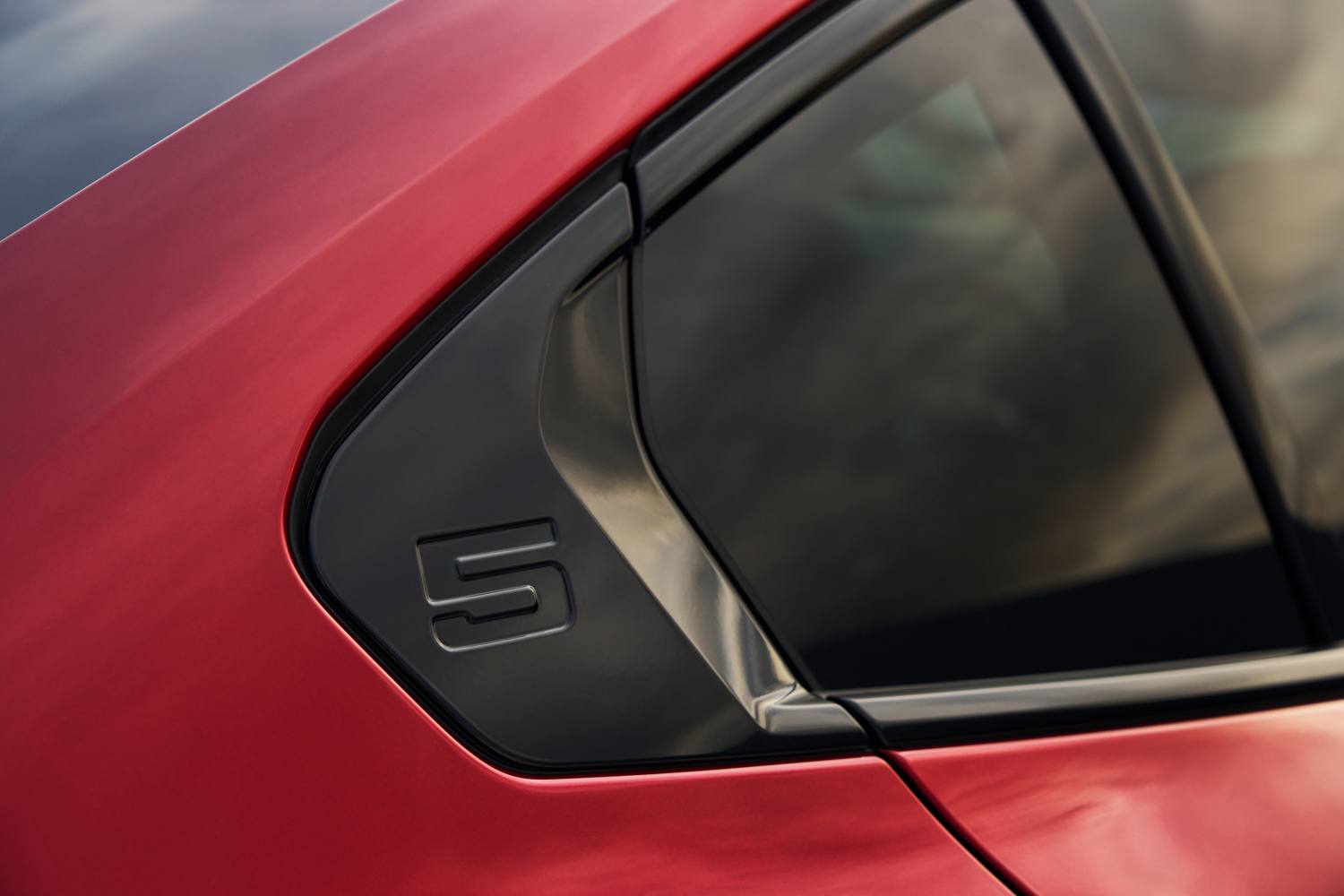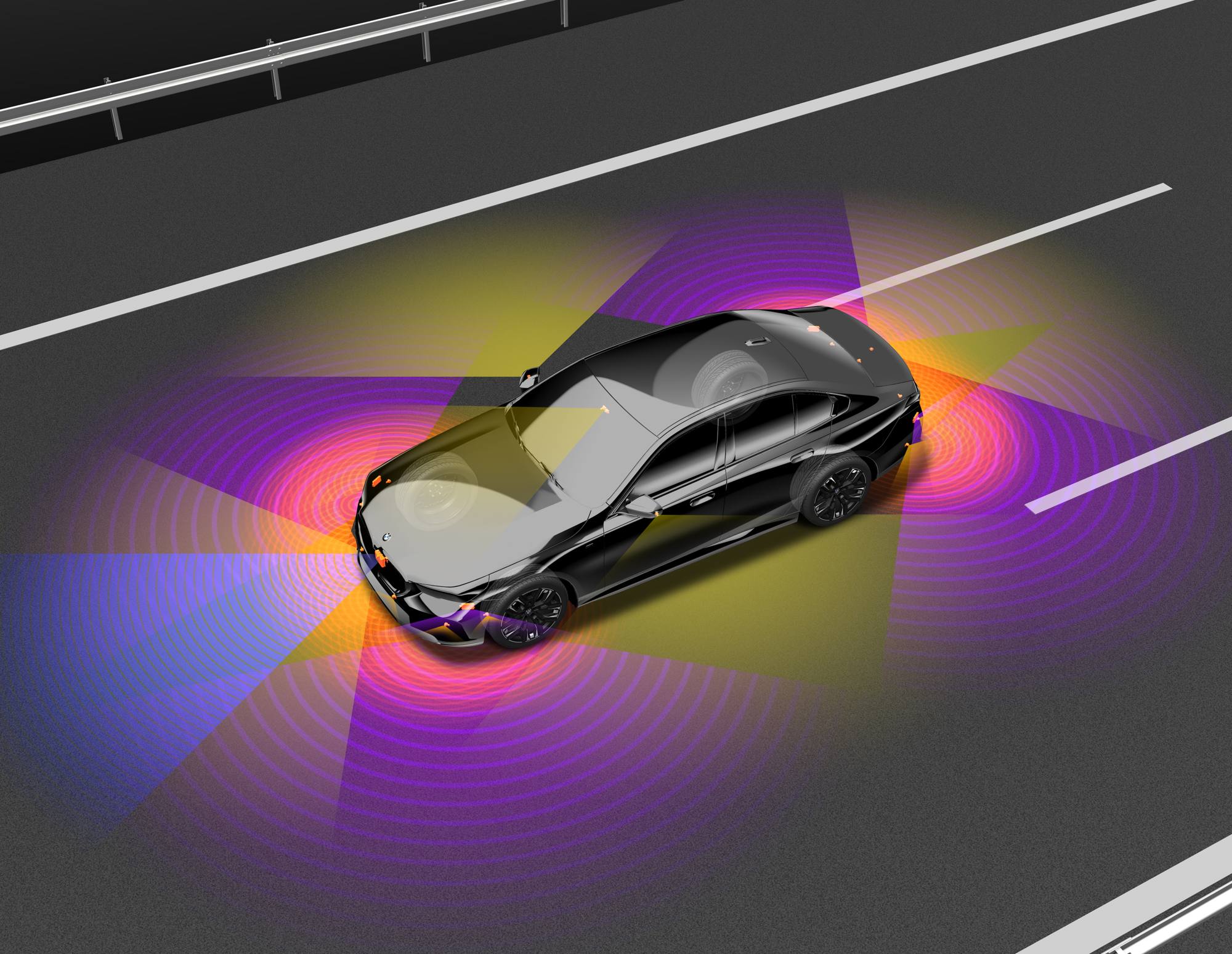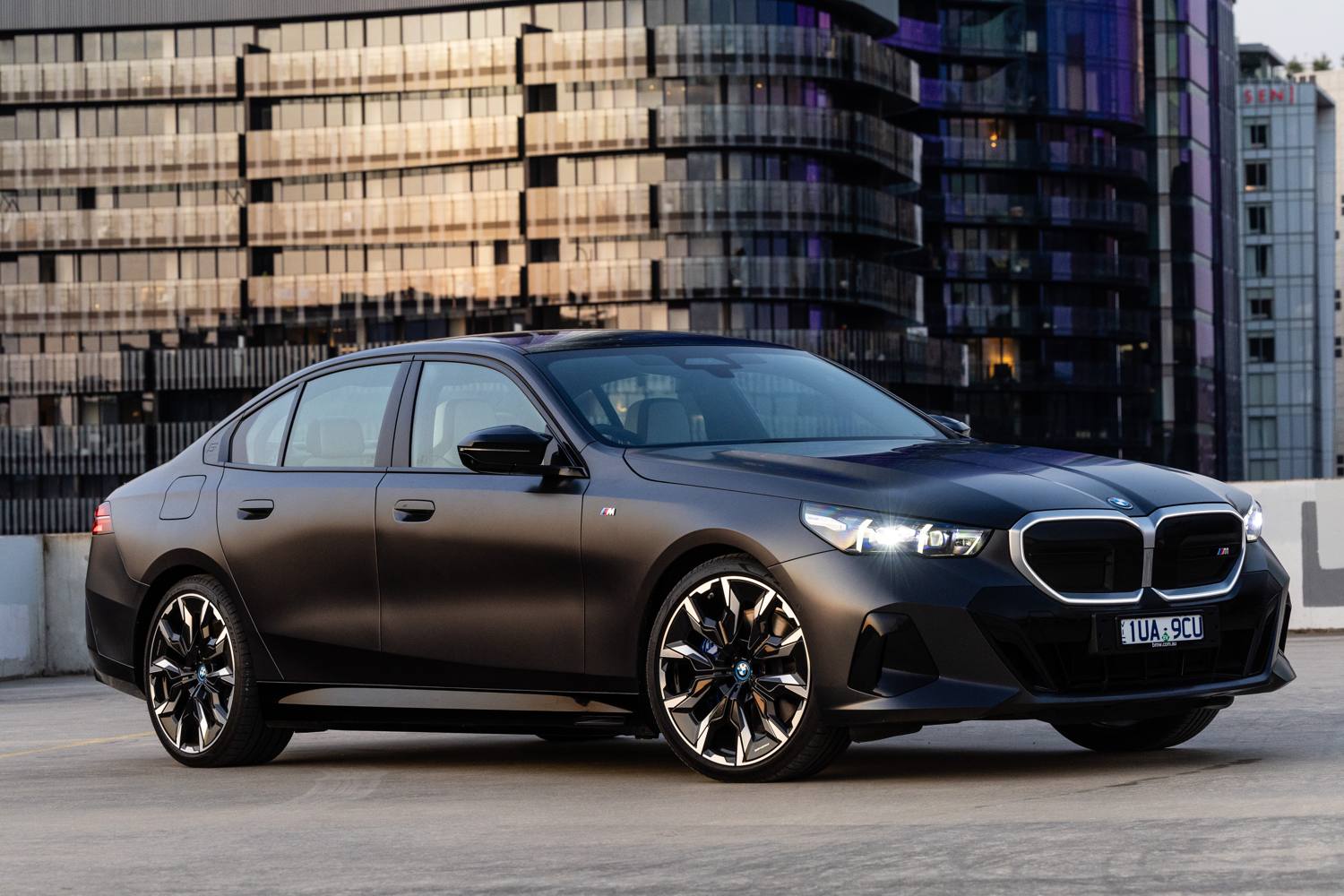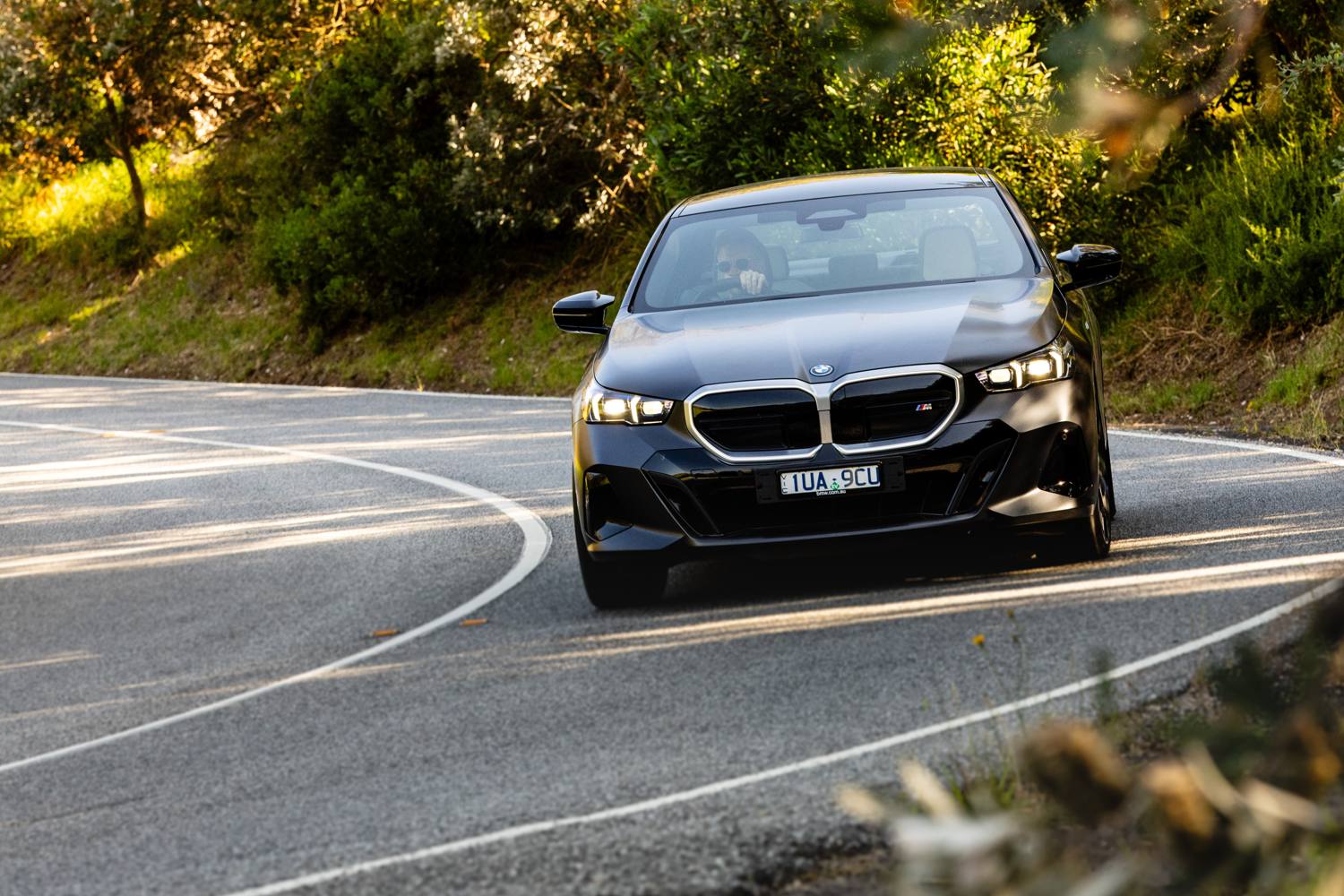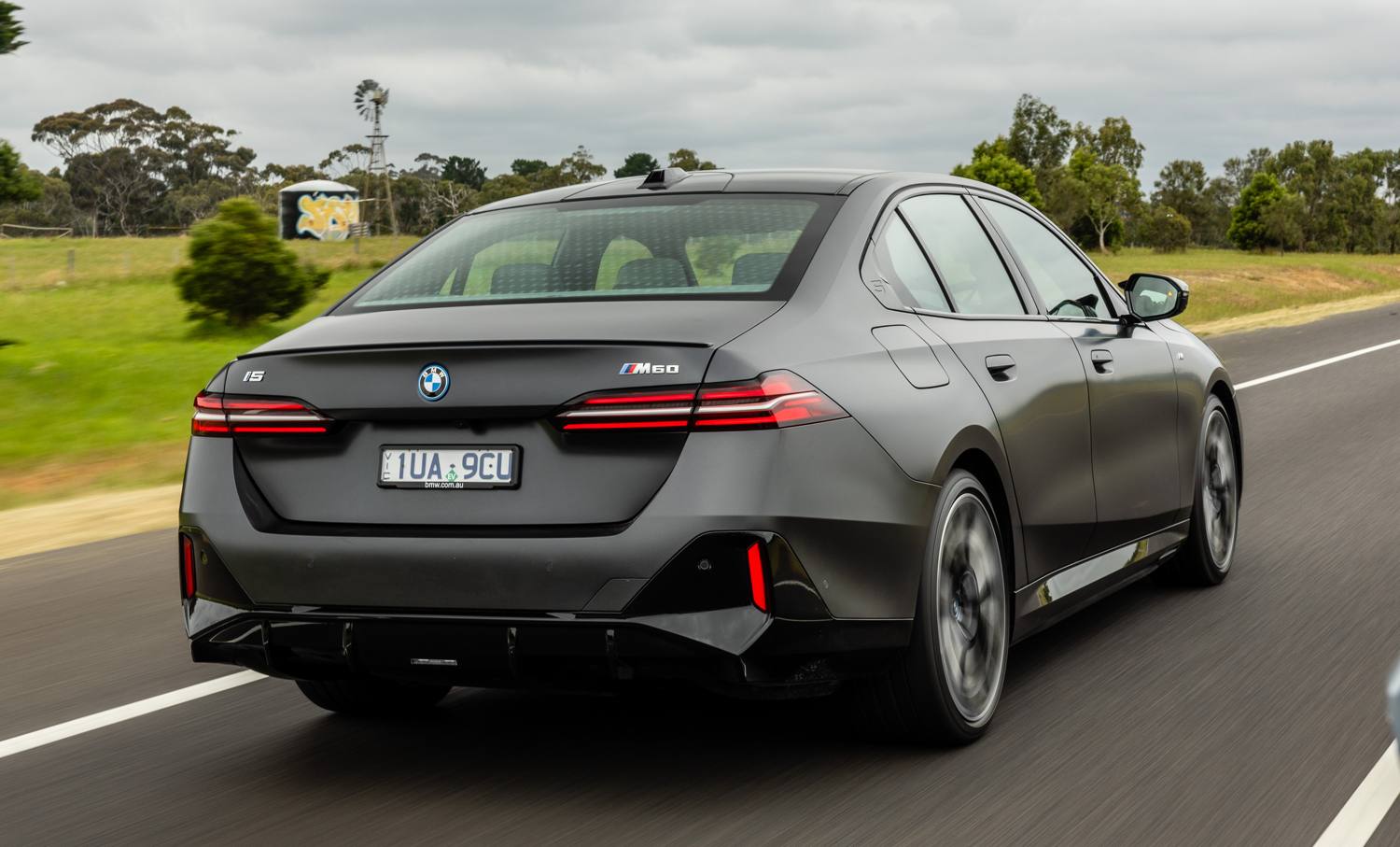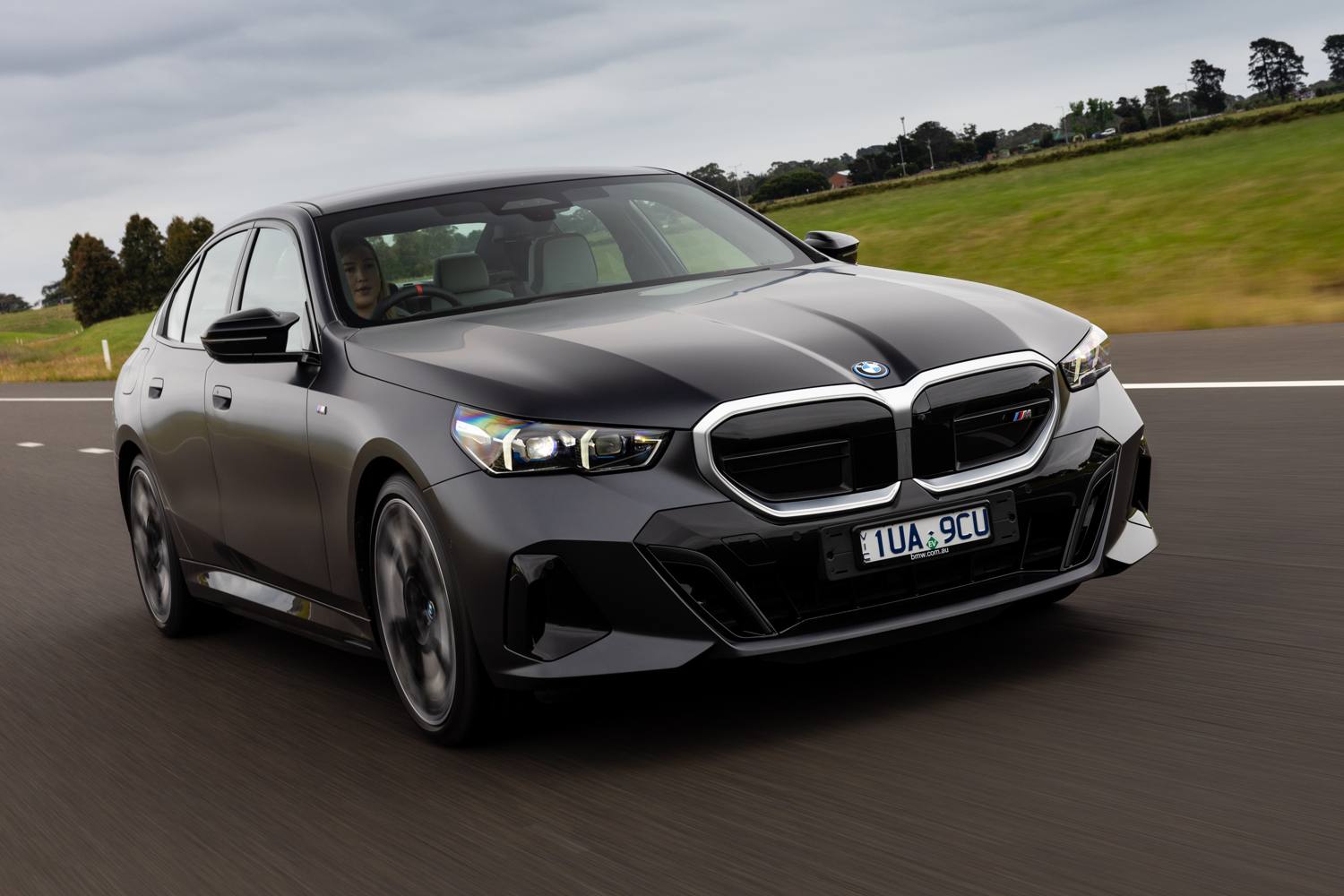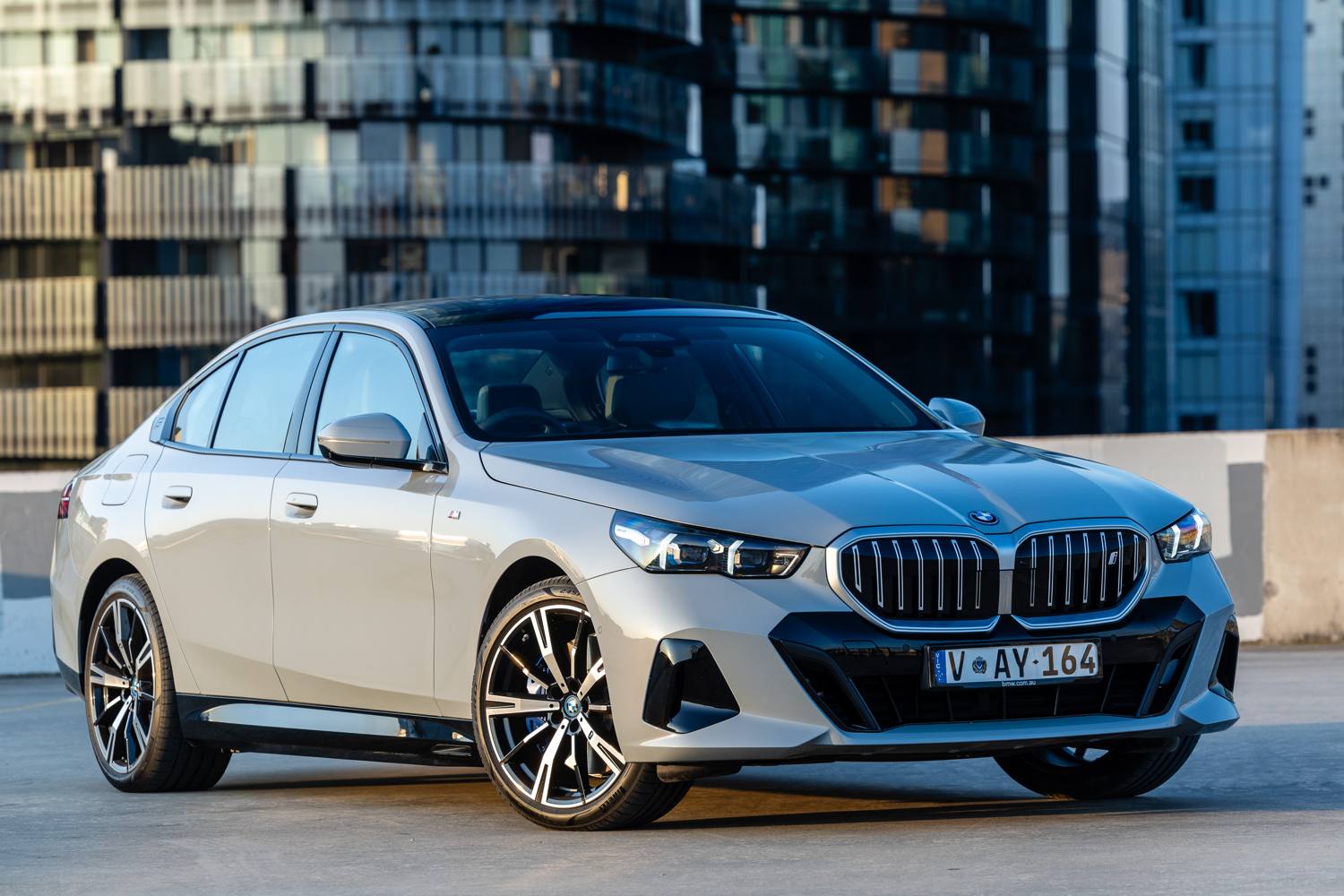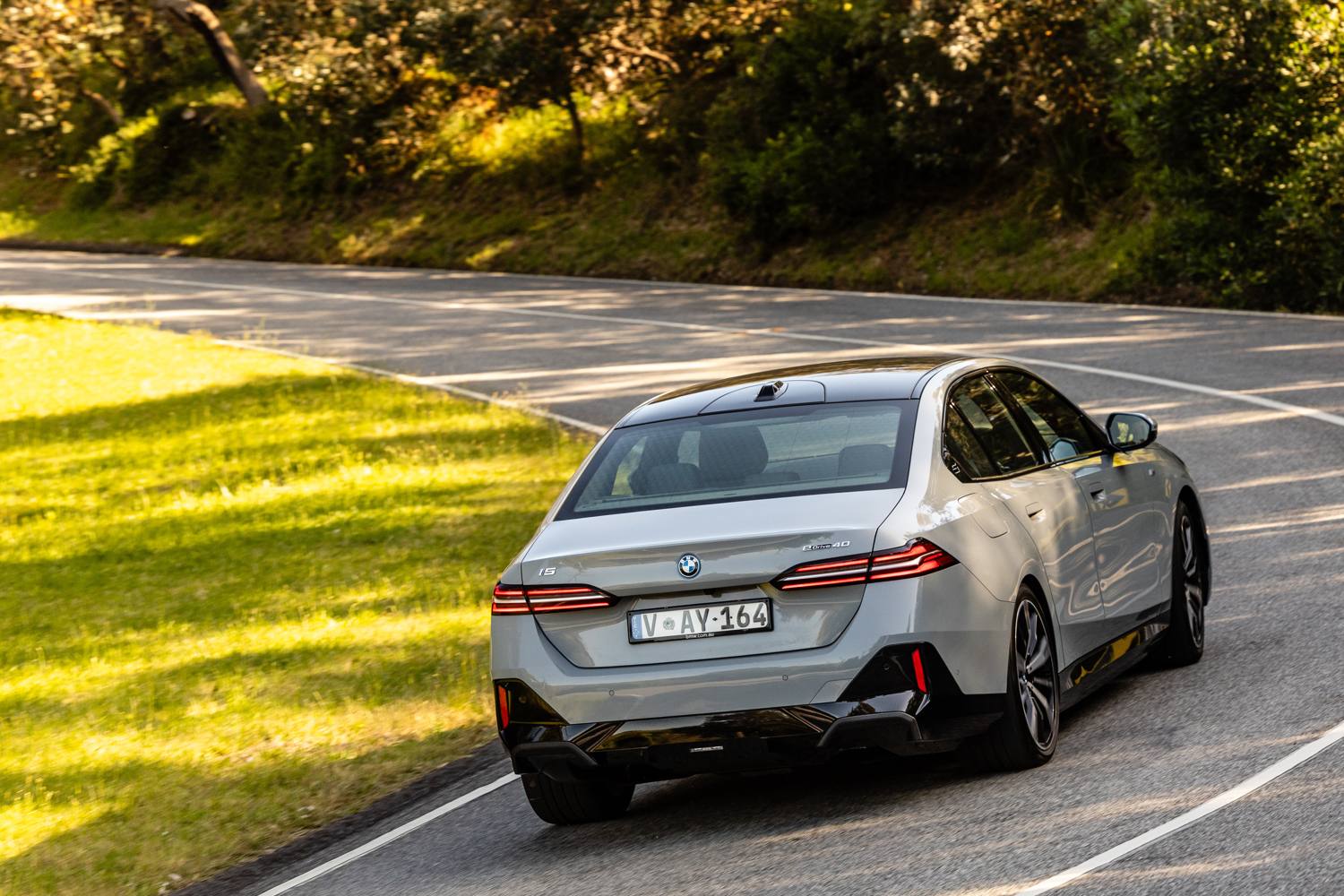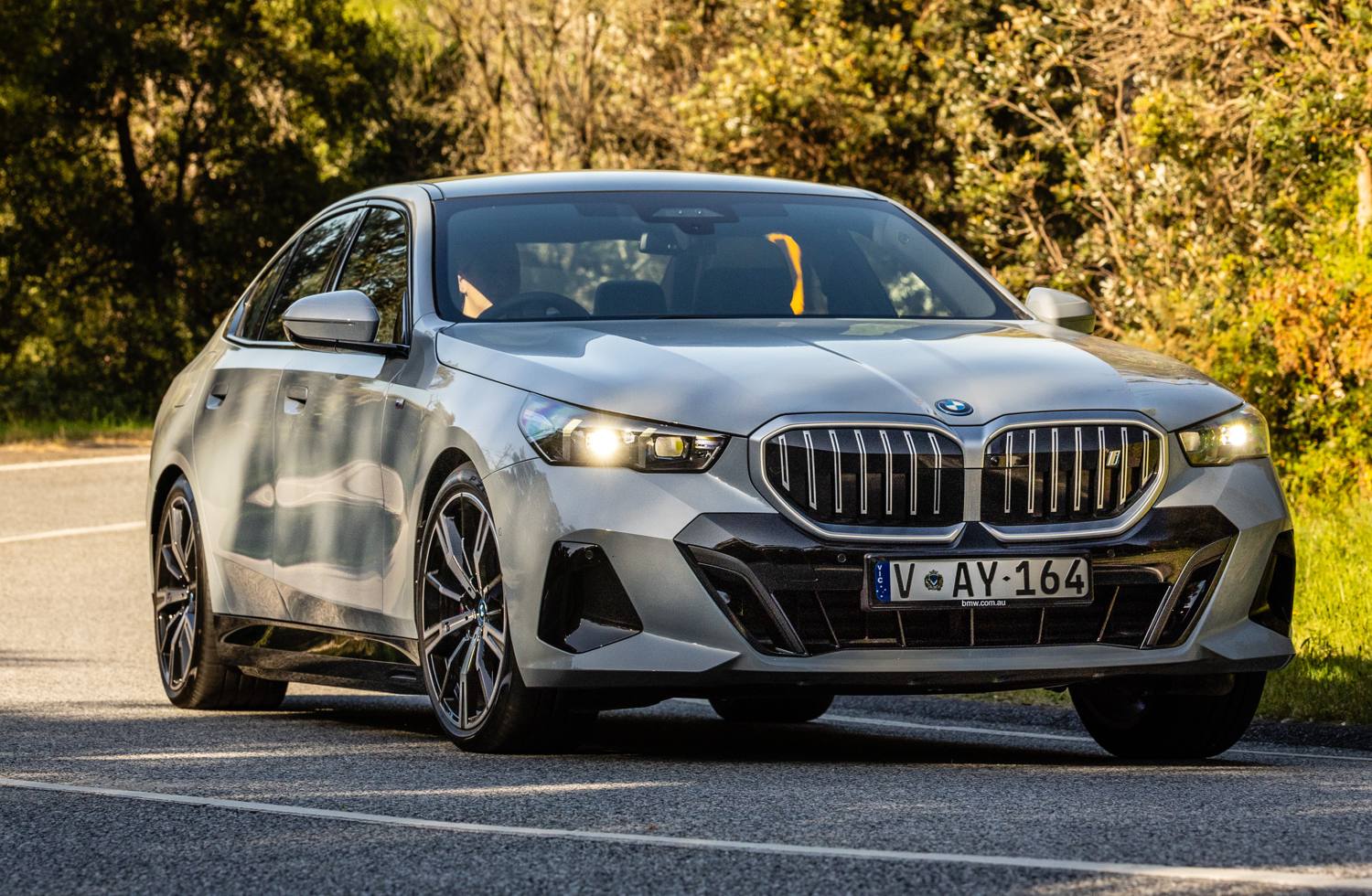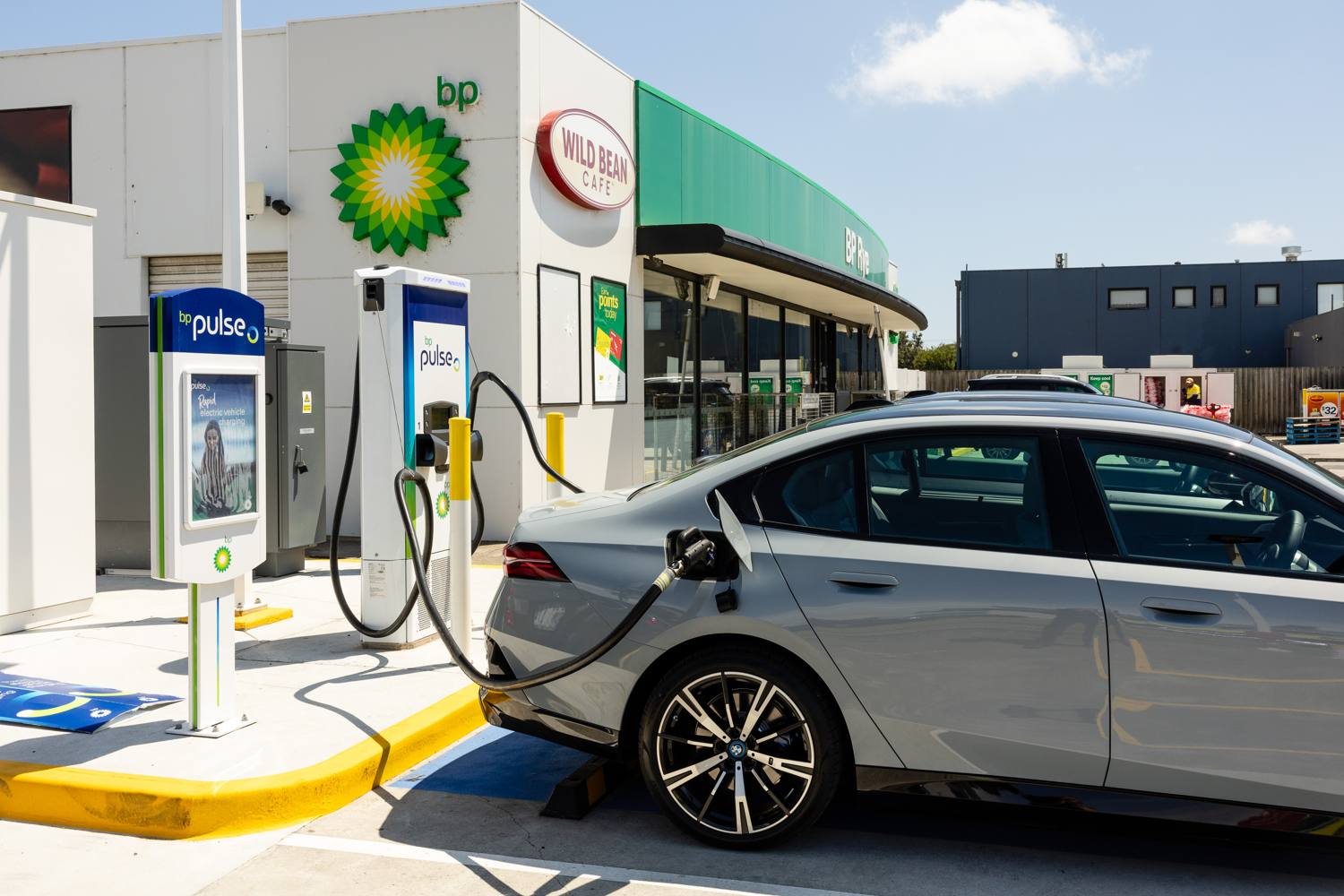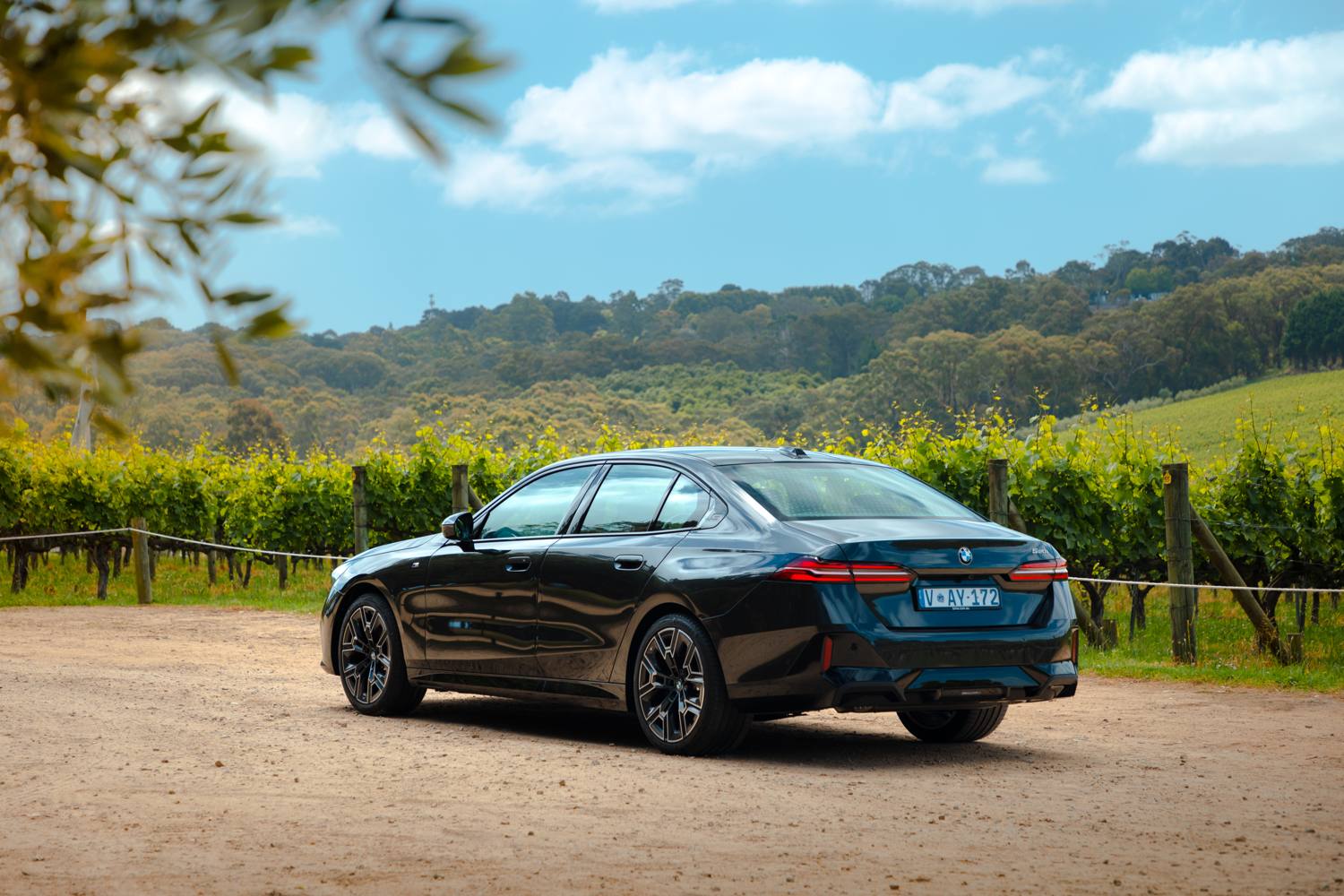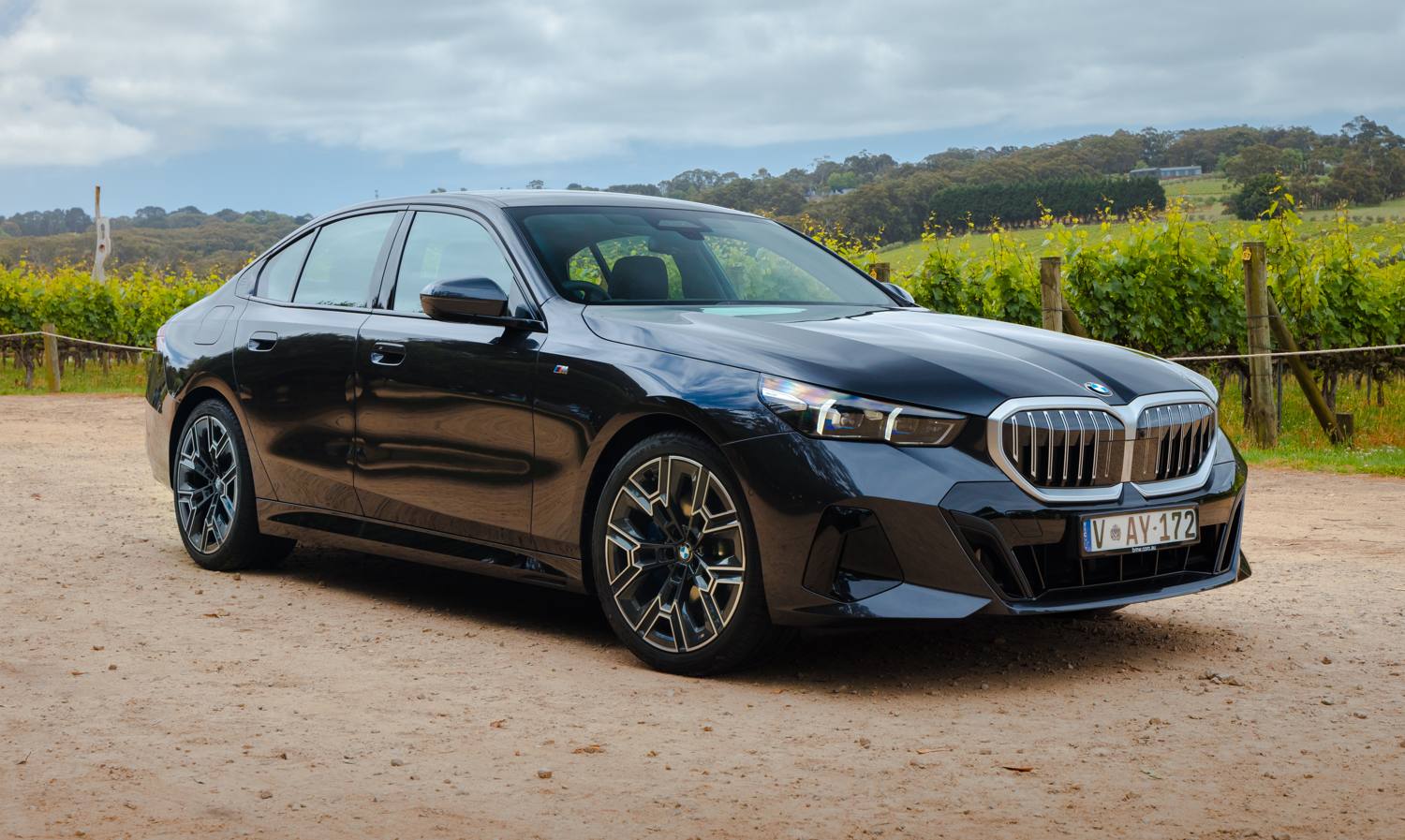Generation Game
The new G80 5 Series is the eighth generation of a legendary BMW model that first arrived in 1972.
A new BMW 5 Series is big deal for BMW, the broader automotive industry and for car enthusiasts. The first generation, the E12, arrived in 1972 in what was a huge year for BMW. The brand’s home town of Munich hosted the Olympics that year, the iconic ‘four cylinder’ headquarters opened, the M division came to life as BMW’s official motorsport department, the Turbo concept debuted, a pair of battery-powered 1602 Elektro-Antriebs were built to ferry Olympic officials around Munich.
Designed by the legendary Paul Bracq, the E12 5 Series was manufactured from revealed at the 1972 Frankfurt motor show and remained in production until 1981. First offered with a 2.0-litre four-cylinder engine, the E12 was eventually available with a range of inline six-cylinder engines and, in some markets a 1.8-litre four. BMW South Africa offered the first performance 5 Series in 1976 with the 530 MLE, while the M division joined the party in 1980 with the M535i
Replacing the E12, the E28 shared plenty of underpinnings with the original model (the doors are interchangeable) but featured an expanded range of engines, including an economy-focused long-stroke 2.7-litre straight six. The M5 arrived in 1985 when M dropped the M1’s M88 3.5-litre six under the bonnet. Production ran until 1988.
The E34 ran from 1988-96 and its thoroughly modern styling still looks crisp today. While the M5 retained its six-cylinder engine (initially 3.5 litres and later 3.8), the E34 introduced V8 power to the 5 Series. A wagon also arrived in 1992.
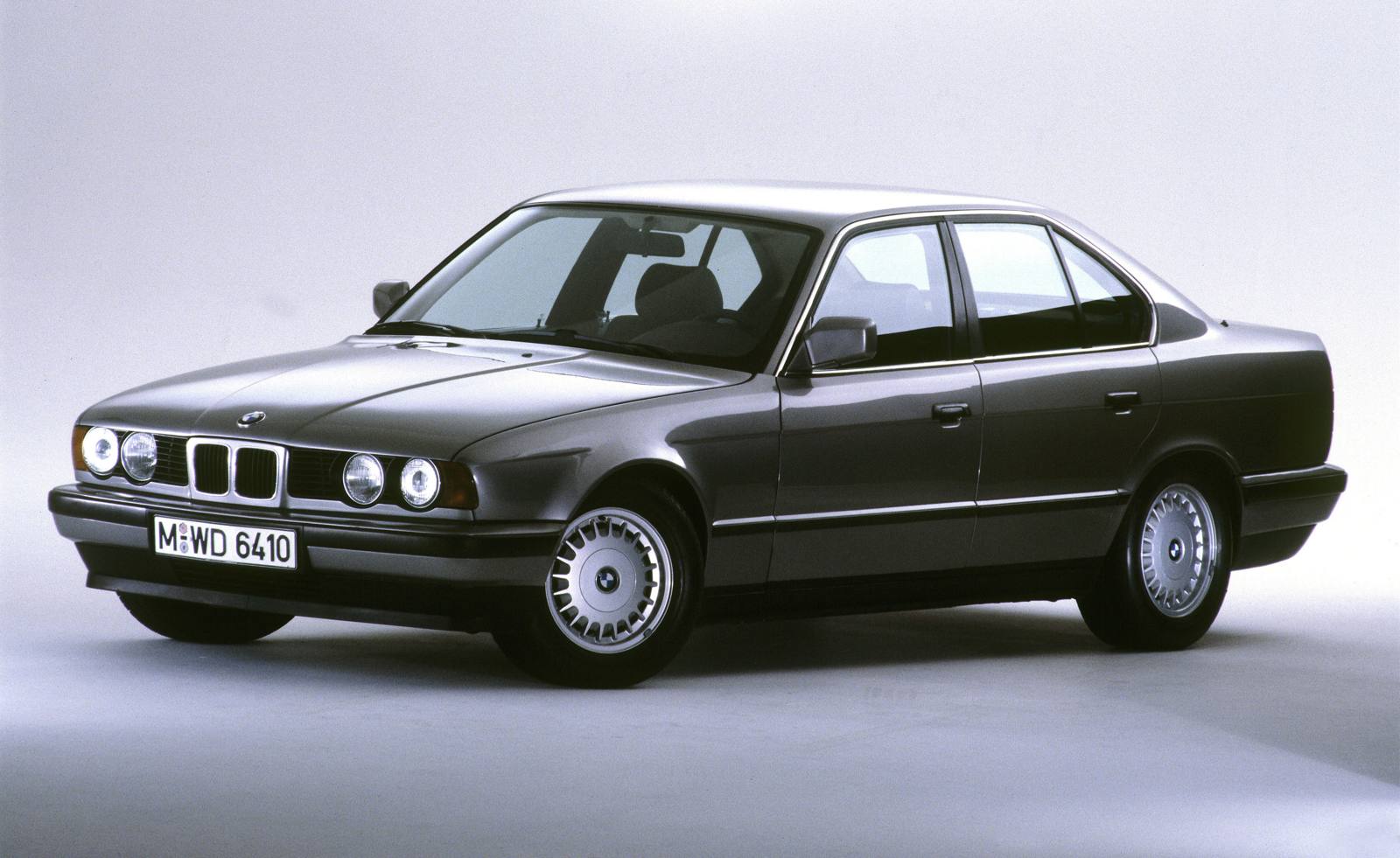
In mid-2022, we had the opportunity to revisit a E39 M5 and it looked and felt as fresh as our rose-coloured glasses recall from 20 years earlier. It was the first V8-powered M5 model, but the straight six remained prominent in the range, and we still pine for a 530i M Sport. Production ran from 1996-2003.
Controversy surrounded the ‘flame-surfaced’ E60 but it, and the equally controversial E65 7 Series, has aged well and both models look contemporary today. The E60 M5 was powered by BMW’s glorious 5.0-litre naturally aspirated V10. The E50 5 Series was in production from 2003-2010.
The F10 generation 5 Series brought a return to more traditional styling, but was forward-looking with the introduction of the first hybrid model, the ActiveHybrid 5. At the top of the range, the M5 dropped the V10 for a twin-turbocharged V8 that has served the model ever since.
After the F10 (2010-17), the G30 arrived and ran until last year. Built on the renowned CLAR platform, the F10 featured a higher proportion of aluminium in its construction which reduced weight by up to 100kg. The all-wheel-drive M5 CS remains a favourite.
Brains, Character and Style
The strong character of the new 5 Series design draws on the model’s heritage, while the interior blends luxury with next-level technological advancements.
Whether petrol or electric, the new G60 5 Series is a big car. Indeed, at 5060mm, the new 5 Series is 97mm longer than its predecessor and the first 5 to stretch beyond five metres. It’s also 32mm wider (now 1900mm), 36mm taller (1515mm) and sits on a wheelbase that’s 20mm longer (2995mm). While occupying roughly the same real estate as the infamous Chris Bangle-designed E65 7 Series (2001-2008), the new G60 5 Series doesn’t look that large in the metal. Nor does the design offer the controversy of the ‘flame-surfaced’ Bangle 7 or even some of BMW’s more recent offerings. Instead, the new 5 Series follows the tradition of the model that has been the backbone of the luxury and executive sedan market for more than half a century. Perhaps the most ‘extreme’ design flourish is the BMW Iconic Glow lighting that illuminates the kidney grille.
All variants in the new 5 Series range are equipped with the M Sport package and the two fully electric variants can be further enhanced with the M Sport Plus package.
Across the range, standard equipment levels are high, starting with the 520i that boasts a 12.3-inch digital instrument cluster and curved 14.9-inch centre display; BMW Live Cockpit Professional; Connected Drive; 12-speaker Harman Kardon surround sound audio; wireless charging tray; heated sports front seats; non-opening panoramic glass roof; M Sport suspension; 19-inch alloys; two-zone air-con; and adaptive LED headlights.
The i5 eDrive40 builds on this 20-inch alloys; Adaptive Suspension Professional; metallic paint; 17-speaker Bowers & Wilkins surround sound audio and BMW Individual Leather Merino upholstery. The range-topping i5 M60 xDrive adds Adaptive M Suspension Professional; 21-inch alloys as a no-cost option; four-zone air-con; active front seat ventilation; and M rear spoiler.
Generous space, modern functionality, a high level of acoustic comfort as well as high-quality, precisely processed materials, fine workmanship and advanced digital services characterise the interior’s ambience. The BMW Interaction Bar, which is standard on all BMW 5 Series models for Australia, represents another highlight. The backlit functional unit with crystalline surface structure extends across the entire width of the instrument panel far into the door panels and includes touch-sensitive control panels.
The BMW Crafted Clarity Glass application – fitted as standard on the i5 M60 xDrive and available for the BMW 520i and i5 eDrive4O – delivers a distinctive and luxurious look and feel with the iDrive Controller, Start/Stop button, volume roller and gear selector rocker switch finished in crystal cut glass elements manufactured by Swarovski.
The enhanced BMW iDrive display and control system with QuickSelect also contributes to the characteristic driving and travelling experience in the new BMW 5 Series Sedan.
The system is based on the BMW Operating System 8.5 and features a redesigned home screen with vertically arranged function icons on the driver’s side. BMW Operating System 8.5 offers a wider range of digital content for information and entertainment, faster update cycles for functions, improved information on charging points for electric vehicles and optimised access to online services.
Video streaming is possible on the Control Display, as is an innovative form of in-car gaming presented for the first time in the new BMW 5 Series Sedan with the AirConsole platform. The driver and passengers can enjoy games while the vehicle is stationary, for example to bridge waiting times while charging the high-voltage battery of the BMW i5.
All models in the range are covered by a five-year warranty, and the two i5 models come with a five-year Chargefox subscription.
First Principle
BMW’s electric 5 Series demonstrates that EVs don’t have to reinvent the wheel for the sake of being different.
We like BMW’s i4, it feels as close to a 3 Series as you can get without an ICE motor primarily because it’s just that: an electrified 3 Series (4 Series Gran Coupe if we’re being pedantic). Built on the same Cluster Architecture (CLAR) as the internal combustion engine models, rather than reinventing the wheel as so many EVs do, BMW took the decision that ICE and EV models should feel indistinguishable from each other, hence why the i4 impresses so much.
BMW’s new i5 follows the same path as its smaller sibling by simply being part of the new 5 Series family rather than a standalone electric model. As a consequence, like the i4, it instantly appeals to those who care little about legacy manufacturers trying to reinvent themselves as something they clearly can never be (tech companies, mobility solutionists) while ignoring what it is they actually are: huge, global manufacturing companies that make cars using metal, rubber, plastic and glass. As well as those who like their EVs built to an impeccable standard that drive without compromise compared to an ICE equivalent.
BMW has always had the confidence to stick to what it knows best and do it better than others, and its movement into the electric vehicle sector is no different. That it has also not given a date for when it will stop the manufacture of internal combustion engines also shows a level of pragmatism and wider foresight than others who have already condemned their ICE divisions to history. “ICE and BEV powertrains will be offered in all BMW models and will coexist for at least for the next 10 to 15 years” explained Frank Weber, BMW’s Member of the Board of Management for Development at the i5’s launch.
“We will challenge politics. Ask: What have we done for the green economy? We need to have pure green energy. Ask what have we done for the BEV economy? We need to understand what has to be done to the electrical infrastructure to become a truly green BEV economy.”
Building good sedans is, and always has been, a BMW speciality, and the new 5-series is no different. The eighth-generation 5 Series has arrived in Australia with a three-model line-up consisting of two dedicated electric models and 520i petrol model. Next year, the range will be topped by the M5 super sedan and, for the first time in Australia, an M5 Touring.
Right now, the eighth iteration of a brand staple that launched back in 1972 starts with the $114,900 520i that is powered by the company’s Miller cycle B48 2.0-litre turbocharged petrol four-cylinder that also boasts a 48-volt mild hybrid system. With a traditional rear-drive layout, the 520i sends 153kW and 330Nm to the back wheels via an eight-speed torque converter auto. Key performance figures are a 0-100km/h time of 7.5 seconds and a combined consumption rating of 6.7L/100km.
Also rear-drive but fully electric, is the i5 eDrive40 that starts from $155,900. It uses an 85kWh lithium-ion battery pack that powers an electric motor on the back axle to deliver 250kW and 430Nm. The eDrive40’s 0-100km/h time is a neat 6 seconds and the range according to the WLTP testing regime is 582km.
The $215,900 i5 M60 xDrive tops the new 5 Series range until the M5 arrives next year, and with a combined output of 442kW and 820Nm it looks to be something of a cut-price, EV M5. The xDrive suffix means that the i5 M60 runs a motor on each axle, and the resulting all-wheel-drive traction off the line delivers a 0-100km/h sprint of just 3.8 seconds – a performance parameter that gives further weight to the on-paper comparison to an M5. As with any ICE car, the extra performance of the M60 comes with a consumption and range penalty, but the flagship electric 5 Series still offers a WLTP range figure of 516km. And our experience on the Australian launch suggests that a real-world figure well beyond 450km is entirely feasible.
Both i5 models have a max AC charge rate of up to 22kW, and 205kW on DC. On a high-speed fast DC charger, BMW claims that a 10-80 per cent recharge takes “around 30 minutes”.
Now it’s time to put all of this to the test as we get behind the wheel of the M60 xDrive, eDrive40 and 520i.
Peak Performance
Until the new M5 arrives, the eighth-generation 5 Series range is topped by the all-electric i5 M60 xDrive. It marries traditional and futurism with ease.
A million years ago I ran back-to-back 5 Series long termers. Both the E39 and E60 were in 530i M Sport spec and I absolutely loved every minute of driving them (especially the sweet riding E39). Rather than recall a previous M5 model, it’s these goldilocks 530s of which the new i5 M60 xDrive most reminds me. Of course, the performance of the 442kW, 820Nm M60 is of another magnitude to those naturally aspirated straight sixes, but the way that performance blends with everyday luxury and useable and useful technology makes this old head reflect through rose-tinted glasses. There’s just a rightness to how the i5 M60 goes about its business.
Body control is neat and crisp but also free enough to convey road speed and a sense of flow. The i5 is always superbly composed. Some of that is down to the fact that BMW hasn’t just slid a battery pack into the regular 5 Series chassis. The EV gets a stiffening panel for the front subframe and a large, trough-shaped plate that connects the front struts to the bulkhead. The real work is at the back, however. Here, the subframe is fixed to the floorpan with additional torsion and compression struts, in an effort to extend rearwards the exceptional stiffness that the battery pack affords the monocoque.
The i5 M60 corners with a flat stance, helped, no doubt by the active roll stabilisation. Rear steering also plays a part in imbuing the M60 with a sporting character on a winding road. There’s not a vast amount of feedback from the steering wheel, but there’s enough dynamic tension in the chassis to mark it out as a properly sporting sedan, as distinct from a sports sedan like the M5. While it’s not an electric M5 (something BMW doesn’t claim) it certainly feels closer to an M5 than a 7 Series limo.
There’s a linearity to the drivetrain that marries to the chassis responses, making the i5 M60 an easy car to pilot through a variety of scenarios. Late peak-hour Melbourne traffic was dispatched on a silent breeze of ‘throttle’ but a firmer shove on the go-pedal away from the sprawl instantly summons the army of electrons to dial in warp speed. But unless you’re tapping into that instant-torque party trick (which is worth experiencing), it’s best to stroke the i5 M60 along.
Do so, and the i5 M60 feels like the great 5 Series executive sedans of the past. It eats up the motorway and cruises down country roads with ease and comfort. Indeed, the M60 reminds me of an Alpina-fettled 5 Series rather than a product of the M division. And don’t take that as a slight, that’s a huge compliment to the new i5 M60 as it means that the newcomer has a familiarity to other 5 Series models, but enough of a character difference to set it apart.
Conditions never presented to fully tap into the all-wheel-drive traction on offer, but I’d suggest you’d be travelling mighty quickly to challenge the Pirelli’s hold on the tarmac. And the huge grip means spirited direction changes are dispatched with ease. Even when pushing on, however, there’s an underlying sense of calm and ease about the M60. Almost like it understands that it is fast and dynamic but doesn’t feel the need to exhibit its latent talents at all times. Speak softly and carry a big stick.
The new eighth-generation 5 Series feels like a continuation of the heritage that began in 1972, and the all-electric i5 M60 xDrive a flag-bearer for the model into the future. And until the M5 arrives sometime in 2024, it also serves as a worthy leader of a very impressive range.
Strong and silent
With 250kW and 430Nm from its single-motor electric drivetrain, the i5 eDrive40 might just be the most right-sized EV on the market.
It’s a big car, the i5. At over five-metres in length, 1.9-metres wide and sitting on a 2.9-metre long wheelbase, it’s on a par with a 2008 7-series. BMW says that these dimesnions, and the interior appointments give the new 5 the luxury of a 7, but that its chassis smarts endow it with the dynamics of a 3. That’s a big call, but there’s plenty of evidence that the new 5 Series is indeed the Goldilocks of the BMW line-up.
Traditionalists, and those who like their cars interiors to be functional rather than styled for the sake of a design ego, will find the i5 brilliantly comfortable and intelligently laid out, with materials that help justify the $155,900 price tag. The screens a clear and display the info you need, and the interface is user friendly. There’s a chunky steering wheel to grip, and a centre console to operate the transmission and drive mode controls. It feels very BMW, simply configured, brilliantly executed.
There’s a great deal of sophistication to how the i5 drives. The silence from its powertrain delivers the calming luxury factor BMW was hunting for and the ‘throttle’ pick-up from standstill is smart and regardless of the road and scenario you find yourself, in the i5 eDrive40 doesn’t leave you holding out for more. For today’s world it has all the performance you need.
You settle into a rhythm and flow more in keeping with an exec-sedan than a super-sedan, and it’s all rather agreeable as a result. Distance flies by, the suspension absorbs the surfaces beneath.
When it comes to changing direction it’s crisp and clean with linear actions to the core controls, which is welcome due to the size of the car and the need to be precise when positioning it on the road.
If you’ve spent any time in a 5 Series – or any BMW sedan – you’ll feel right at home as to how the i5 drives. If you haven’t and you find EVs soulless and empty to drive, the i5 addresses this issue.
Range is claimed to be up to 582km and 205kW charging is possible, which means the i5’s 81.2kWh battery can be topped up from 10 to 80 percent in 30 minutes. An 11kW onboard charger is standard, with a 22kW unit optional.
If you’ve been holding out for an EV in this sector, the i5, whether M60 or eDrive40 tested here, offers the strongest and most compelling proposition of them all, carrying on the strong work established by the impressive i4.
Quick Start
Until the M5 arrives, the 520i is the only petrol-powered model in the range. At $114,900, it also serves at the entry-point to the 5 Series range.
Despite its entry-level status in the new G60 range, there’s nothing but craftsmanship and quality about the 520i. As previous detailed, the equipment levels are generous, and the interior welcomes you with calming luxury.
Indeed, everything about the 520i is calming. Its 153kW, 330Nm 2.0-litre turbocharged four-cylinder engine ensures quiet progress – the claimed 0-100km/h is 7.5 seconds. BMW’s B48 engine is familiar from other models in the brand’s offering and uses Miller Cycle combustion. In this application, the engine benefits from revised turbocharging and the fitment of a 48-volt mild hybrid system. The engine responds eagerly to throttle inputs but is very much geared towards calm and economical progress. Those after fire and brimstone will need to be patient until the arrival of the twin-turbocharged V8 powered M5 that is due later in 2024.
Ride quality and cabin tranquillity are beyond reproach and the 520i makes good on the first part of BMW’s assertion that the new 5 Series combines the luxury of the larger 7 Series with the sporting agility of the smaller 3 Series. The rear-drive chassis, standard M Sport kinematics and steering response all do an admirable job of completing the boast with dynamics that entertain the driver should the opportunity present itself.
Overall, though, the best way to make progress with the 520i is to flow it along the road rather than grab it by the scruff and over-drive it. The steering is linear and accurate though not particularly chatty, but it does make it easy to place the 520i. And while the dimensions have stretched in all directions, the new 5 Series never feels as big as the tape measure suggests. At 1725kg, the 520i isn’t a lightweight, but in this day and age, it’s certainly not an outrageous figure – especially when you consider the technology and luxury on board.
The interior is a wonderful place to spend time either as the driver or as a passenger – most of our 400km with the 5 Series was spent in the driver’s seat, but quality time was spent in the front and rear passenger seats where comfort and convenience was found at every turn.
While the new tech makes out the G60 5 Series as very much an all-new car, it continues to exude traditional 5 Series traits that will appeal to long-term owners and admirers of the series.


